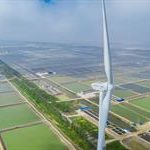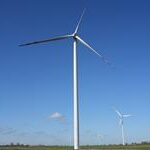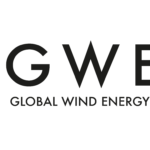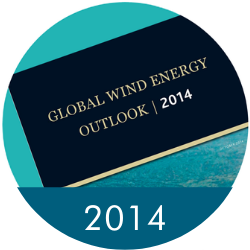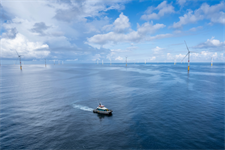Wind and solar could overtake gas and coal by 2024
Energy Disrupter
Renewable capacity additions are due to reach record levels this year as the sector has remained acutely resilient during the coronavirus pandemic, according to a new forecast.
This potential new record will likely be broken next year, as renewable capacity additions surge, driven by project delays – rather than cancellations – from this year, the International Energy Agency (IEA) believes.
With growth set to continue, installed renewable capacity is likely to exceed natural gas and then coal in the next five years, the analysts predict.
However, policymakers will need to facilitate this growth, with resolving permitting issues, aiding grid integration and increasing social acceptance some of the key challenges for wind power.
Creating suitable policies for repowering will be vital for future growth, the reports adds.
The IEA forecasts 198GW of new renewable energy capacity will be brought online this year, driven by wind (65GW, up 8% from last year), hydropower (up 43%) and solar PV (stable growth).
If this prediction is realised, renewables will account for nearly 90% of total global power additions in 2020, according to the report.
This growth will happen despite the coronavirus pandemic, which has disrupted supply chains and project construction around the world, the analysts noted.
However, such obstacles were more prominent in the first six months of the year, the IEA points out. Wind expansion in the first half of the year was down nearly 8% from 2019, while solar PV build-out was 17% less than last year.
Construction activity did not halt in many countries, manufacturing activity has ramped up quickly and logistical challenges have been mostly resolved with the easing of cross-border restrictions since May, the analys found.
Renewable electricity auction results by technology and country/region, 2018-20
Auctions for renewable energy capacity (see above) and investor interest in the sector have also continued despite the pandemic this year.
“Renewable power is defying the difficulties caused by the pandemic, showing robust growth while other fuels struggle,” said IEA executive director Fatih Birol.
“The resilience and positive prospects of the sector are clearly reflected by continued strong appetite from investors – and the future looks even brighter, with new capacity additions on course to set fresh records this year and next.”
The IEA’s forecast aligns with that of the Global Wind Energy Council (GWEC), which last week predicted wind power capacity additions reaching record levels in 2020 and 2021.
2020
Auctioning of renewable power capacity has continued worldwide during the pandemic, with China, India and several European Union countries driving tender volumes in the first ten months of this year 15% higher than in 2019.
This trend suggests strong demand for renewables over the medium and long term, according to the IEA.
Indexed stock market prices for traded energy companies and major indices, 2018-20
It added that shares of publicly listed renewables equipment manufacturers and project developers have been outperforming most major stock market indices as well as the overall energy sector so far this year (see above).
The IEA forecasts global renewables’ electricity generation will increase by 7% in 2020, while global energy demand will drop by 5% – the largest fall since the Second World War.
2021 and beyond
The IEA expects renewable capacity additions to surge by about 10% in 2021, as delayed projects are brought online.
It forecasts 68GW of wind power capacity – including 7.3GW of offshore wind – being brought online in 2021.
Renewable electricity net capacity additions by country/region 2019-22
India is due to be the largest contributor to this upswing, with its annual additions doubling as a large volume of delayed wind and solar PV projects are brought online. Many projects have been delayed during the coronavirus pandemic, and/or by contract negotiations and land acquisition challenges, the IEA notes.
EU capacity additions are also expected to jump in 2021 as wind and solar PV projects awarded in previous tenders in France and Germany are commissioned.
Beyond 2021, the picture becomes more uncertain, with national governments’ policies due to play a major role in how renewable energy will expand worldwide.
The IEA says that with incentives expiring in key markets – including the US and China – there could be a small decline in renewables capacity additions in 2022.
However, the analysts argue that if countries address these policy uncertainties in time, global solar PV and wind additions could each increase by a further 25% in 2022.
Birol added: “Renewables are resilient to the Covid crisis, but not to policy uncertainties.
“Governments can tackle these issues to help bring about a sustainable recovery and accelerate the clean energy transitions.
“In the United States, for instance, if the proposed clean electricity policies of the next US administration are implemented, they could lead to a much more rapid deployment of solar PV and wind, contributing to a faster decarbonisation of the power sector.”
The IEA also notes that China’s forthcoming five-year plan – due to be announced at the end of the year – will be key to the pace of renewables expansion in the country.
Despite the uncertainty ahead, the IEA forecasts total wind and solar PV capacity will surpass natural gas in 2023 and coal in 2024.
In countries where good resources and cheap financing are available, wind and solar PV plants will challenge existing fossil fuel plants on cost, the report states.
By 2025, offshore wind – driven by rapid cost declines – will account for one-fifth of the total wind market, driving renewable electricity generation to new heights, the IEA states.
Renewables will account for one third of the world’s total electricity generation by 2025, with total capacity reaching double that of China’s entire power capacity today, the analysts believe.
Wind will account for 30% of all renewables capacity additions through to 2025, with solar PV accounting for the majority (60%).






